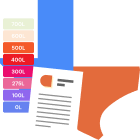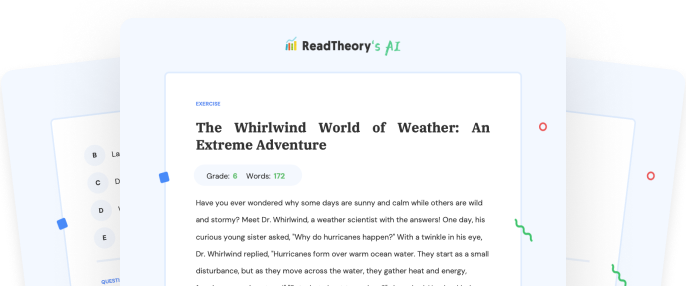Transform Your Teaching
with AI-Powered Worksheets
With ReadTheory’s Instant Worksheet Builder, you can create engaging, grade-appropriate worksheets tailored to your students in minutes. Spark curiosity, save time, and empower critical thinking with AI-powered tools designed for teachers like you.


Journey of Space Probe Juno to Jupiter: A Galactic Adventure
In 2011, NASA launched an ambitious mission, Juno, named after a Roman goddess who could see through clouds. The goal was to unveil the mysteries of the largest planet in our solar system - Jupiter. The journey wasn't easy. For five long years, Juno traveled through harsh cosmic conditions before finally entering Jupiter's orbit in 2016. The probe went on to accomplish unprecedented feats. It flew closer to Jupiter than any spacecraft before, braving the planet's powerful radiation belts. Juno revealed that beneath its thick, cloud-covered atmosphere, Jupiter harboured a complex, turbulent world. It also confirmed the existence of an incredibly large, 'fuzzy' core within the gas giant, challenging our previous understanding of its structure. Juno's pictures of Jupiter's poles revealed cyclones the size of Earth, churning in its atmosphere. The probe also discovered lightning in Jupiter's polar regions, a phenomenon previously thought to be exclusive to Earth. As of now, Juno continues its mission, orbiting Jupiter every 53 days and sending back valuable data. Each orbit brings fresh insights, furthering our understanding of the gas giant and the origin of our solar system.
Question 1
Why is the mission named Juno?
It's an acronym for Jupiter's orbit
It's named after a Roman goddess who could see through clouds
It's named after the scientist who proposed the mission
Juno is Latin for 'journey'
It's a random name chosen by NASA
Question 2
What significant discovery did Juno make about Jupiter's core?
Jupiter doesn't have a core
Jupiter's core is made of solid iron
Jupiter's core is a massive, 'fuzzy' structure
Jupiter's core is similar to Earth's
Jupiter's core is hollow
Question 3
Is lightning a phenomenon only seen on Earth?
Yes, only Earth has atmospheric conditions that create lightning
No, it's also seen on Mars
No, it's also seen on Jupiter's polar regions
No, it's also seen on the Moon
No, it's seen on all planets in the solar system
Question 4
What were the harsh conditions Juno faced during its journey?
Meteor showers
Solar flares
Cosmic radiation
Black holes
Alien attacks
Question 5
What did Juno reveal about Jupiter's atmosphere?
It's a calm, serene environment
It's full of oxygen, making it similar to Earth's
It's non-existent
It's a complex, turbulent world
It's composed solely of water vapor
 or share via
or share via

Assign the ReadTheory pretest to determine students' reading levels.

Why Teachers Love
Instant Worksheet Builder?

Tailored Content for Every Student
Craft worksheets with passages and multiple-choice questions customized to your chosen topic and grade level, ensuring relevance and engagement.

Save Hours
of Prep Time
Our AI, Lexi, generates complete worksheets—passages, questions, and answers—in minutes, freeing you to focus on teaching, not planning.

Standards-Aligned Learning
Every worksheet is designed to boost reading comprehension and critical thinking, aligning seamlessly with State Standards to help your students shine.
Personalized teaching
for personalized learning
Browse worksheets created and refined by educators using Lexi—your source for inspiration and ready-to-use resources.


ReadTheory is free for Teachers to use.
Join thousands of educators using ReadTheory for free. Sign up today and start creating in just minutes!





